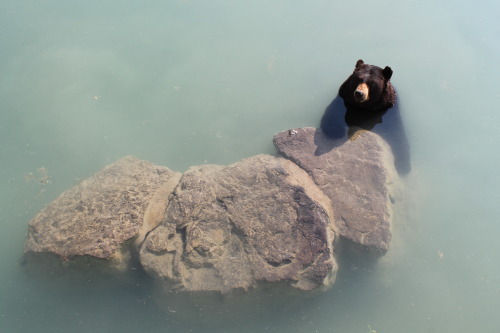La Arquitectura Fundida Con El Arte Se Convierte En Una Obra De Enseñanza Histórica. En Ellas Podemos
La arquitectura fundida con el arte se convierte en una obra de enseñanza histórica. En ellas podemos leer los sucesos de los grandes éxitos militares de la época.





Reliefs on the column of Marcus Aurelius | 2nd Century AD
More Posts from Novato-curioso-blog and Others
Por favor disfruten esta hermosa foto. Por un momento cierren sus ojos e imagínense ahí. Que maravilla no?

Rockesholm

via #NASA_APP

Pot of red clay containing a hoard of 1,925 Roman silver coins, buried c. 230 AD. Part of the Falkirk Hoard found in August 1933 in Bell’s Meadow, Falkirk, Scotland (National Museums Scotland).

Cassini’s Retirement
What were you up to back in 1997? It was an exciting year. Titanic was setting box office records, Dolly the sheep was getting cloned, and the very first Harry Potter book was hitting shelves. It was also the year that a bus-sized NASA spacecraft named Cassini launched. Carrying the ESA Huygens probe, Cassini set off for Saturn to learn all about the lovely ringed planet.
After almost 20 years, Cassini is entering its last phase, building up to the “Grand Finale” that will culminate in September 2017 (if all goes well).
~ Scientific American
Also check out: https://saturn.jpl.nasa.gov/
Un hermoso castillo en Molina, data del s. XVII con remodelaciones en el XIX y XX. Quien lo reconstruyó como el original, se quemó parcialmente en 1896, fué Hubert von Tiele-Winckler hijo.

Moszna Castle, Poland
Guau!! Muero por conocerlo!!! Esta es una verdadera maravilla de la arquitectura para el entretenimiento. Sádico y terrible , pero entretenimiento. Lo importante del lugar es su funcionalidad y perfección de construcción.

The Roman Colosseum.
Otra maravilla romana, ésta ubicada en Efeso

Library of Celsus in Ephesus.
Alejandro, grande entre los grandes



HELLENISTIC WARFARE:
WHEN Alexander the Great died in 323 BCE, he left behind an empire devoid of leadership. Without a named successor or heir, the old commanders simply divided the kingdom among themselves. For the next three decades, they fought a lengthy series of wars - the Wars of the Diadochi or Wars of the Successors - in a futile attempt to restore the tattered kingdom.
Although the Hellenistic Age saw Greek language, art and philosophy flourish throughout Asia, there were few advances in military tactics. Instead, it was a time of “kingdoms and their armies.” The successors inherited an army borne out of the reforms of Philip II of Macedon. He was an innovator; the first Greek to master siege warfare, and with his son Alexander, they made Macedon the foremost power in both Greece and Asia. Together, Alexander and his father would create an army unlike anything the ancient world had ever seen.
Read More
Article by Donald L. Wasson || Photos by Mark Cartwright, Carole Raddato and Caroline Cervera on AHE
-
 f-liiix liked this · 1 year ago
f-liiix liked this · 1 year ago -
 sabertoothwhat reblogged this · 2 years ago
sabertoothwhat reblogged this · 2 years ago -
 stardustmanblue liked this · 3 years ago
stardustmanblue liked this · 3 years ago -
 existentiallens liked this · 3 years ago
existentiallens liked this · 3 years ago -
 beautyofra liked this · 3 years ago
beautyofra liked this · 3 years ago -
 buzzzz1964 reblogged this · 3 years ago
buzzzz1964 reblogged this · 3 years ago -
 buzzzz1964 liked this · 3 years ago
buzzzz1964 liked this · 3 years ago -
 old-school-new-world reblogged this · 4 years ago
old-school-new-world reblogged this · 4 years ago -
 sphinxnomore liked this · 4 years ago
sphinxnomore liked this · 4 years ago -
 jbrookspress reblogged this · 4 years ago
jbrookspress reblogged this · 4 years ago -
 harpoonataventure reblogged this · 4 years ago
harpoonataventure reblogged this · 4 years ago -
 tenebrobscuro reblogged this · 4 years ago
tenebrobscuro reblogged this · 4 years ago -
 tenebrobscuro liked this · 4 years ago
tenebrobscuro liked this · 4 years ago -
 livethroughtthis liked this · 4 years ago
livethroughtthis liked this · 4 years ago -
 falcemartello liked this · 4 years ago
falcemartello liked this · 4 years ago -
 robythechief reblogged this · 4 years ago
robythechief reblogged this · 4 years ago -
 robythechief liked this · 4 years ago
robythechief liked this · 4 years ago -
 meret118 reblogged this · 4 years ago
meret118 reblogged this · 4 years ago -
 queerhistorymajor reblogged this · 4 years ago
queerhistorymajor reblogged this · 4 years ago -
 mood---board reblogged this · 5 years ago
mood---board reblogged this · 5 years ago -
 ryuumw liked this · 5 years ago
ryuumw liked this · 5 years ago -
 las-miradas-son-solo-el-comienzo reblogged this · 5 years ago
las-miradas-son-solo-el-comienzo reblogged this · 5 years ago -
 sapienssapienssapiens-blog1 reblogged this · 6 years ago
sapienssapienssapiens-blog1 reblogged this · 6 years ago -
 jannasaurus liked this · 6 years ago
jannasaurus liked this · 6 years ago -
 gouachevalier reblogged this · 6 years ago
gouachevalier reblogged this · 6 years ago -
 margaretfujii liked this · 6 years ago
margaretfujii liked this · 6 years ago -
 andarilhadasestrelas liked this · 6 years ago
andarilhadasestrelas liked this · 6 years ago -
 karmadi11o liked this · 6 years ago
karmadi11o liked this · 6 years ago -
 ameliora reblogged this · 6 years ago
ameliora reblogged this · 6 years ago -
 audi-vide-disce reblogged this · 6 years ago
audi-vide-disce reblogged this · 6 years ago -
 andrefrancotti-blog liked this · 6 years ago
andrefrancotti-blog liked this · 6 years ago -
 disciplinethepainter liked this · 6 years ago
disciplinethepainter liked this · 6 years ago